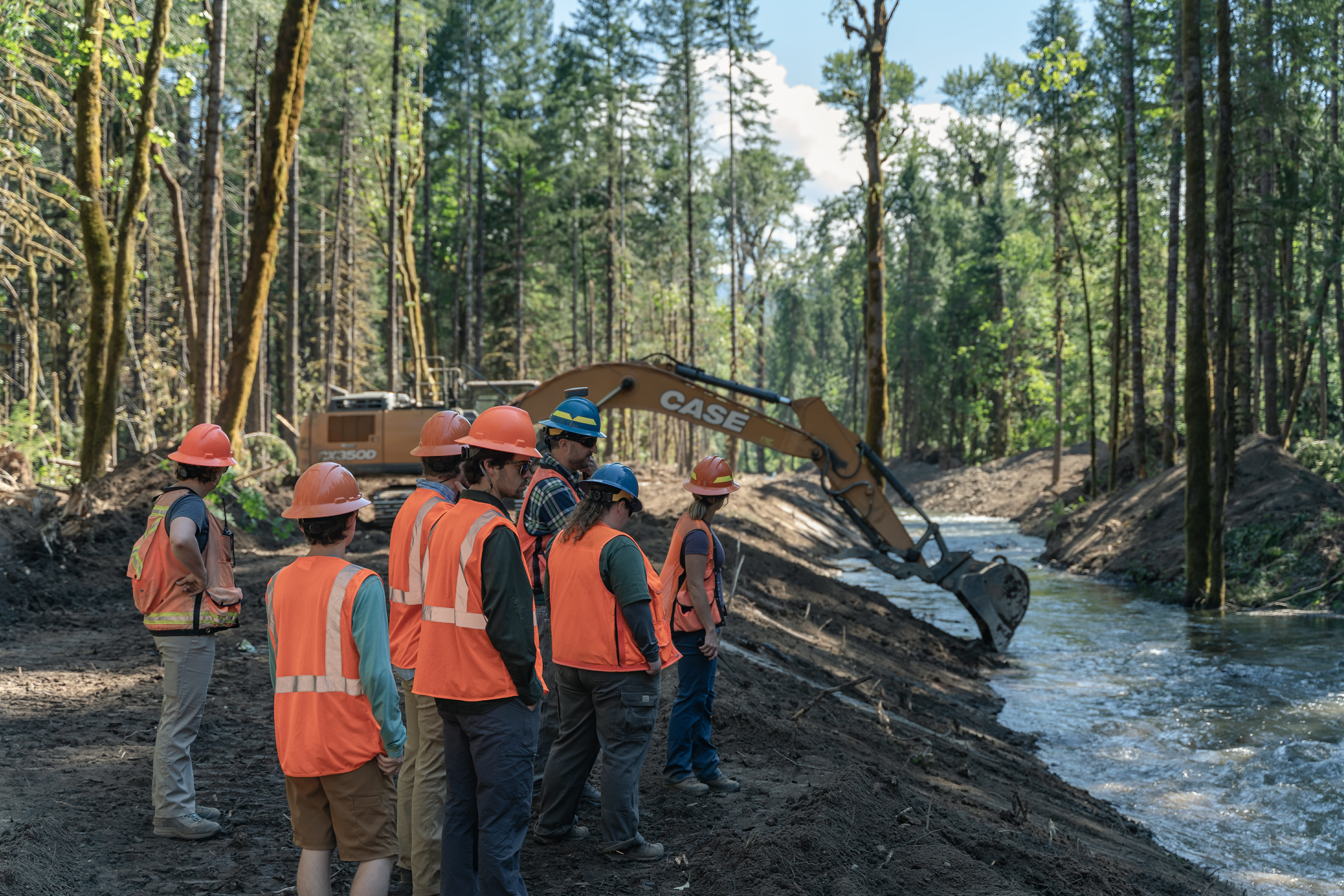Editor’s note: TU sent a handful of college students to the Pacific Northwest for this year’s TU Costa 5 Rivers Odyssey to study and fish in the Columbia River basin.
On the road to Cougar Dam in Blue River, Ore., there is a dirt road in Willamette National Forest that leads you to a squiggly hand-drawn “Road Closed” sign.
As we continued down that road, the Odyssey crew pulled into a red dust clearing —sending clouds into the air. Through the settling particles, I heard, “Raina. Here, Raina. Raina come here.”
“Odd,” I thought, “a river habitat restoration site does not seem like the place for a dog.”
And then I heard an unexpected, “Kawww!”
Out of the dust, with a large raven perched on her arm, walked Kate Meyer. Kate, the U.S. Forest Service fisheries biologist for the South Fork of the McKenzie River Stage Zero Restoration project, extended her hand.
“Great to meet you,” she said. “You guys are going to need some hard hats.”
Sporting our new bright orange attire, we started down the trail following Kate, Jared Weybright of the McKenzie Watershed Council and other members of the Forest Service and Watershed Council.
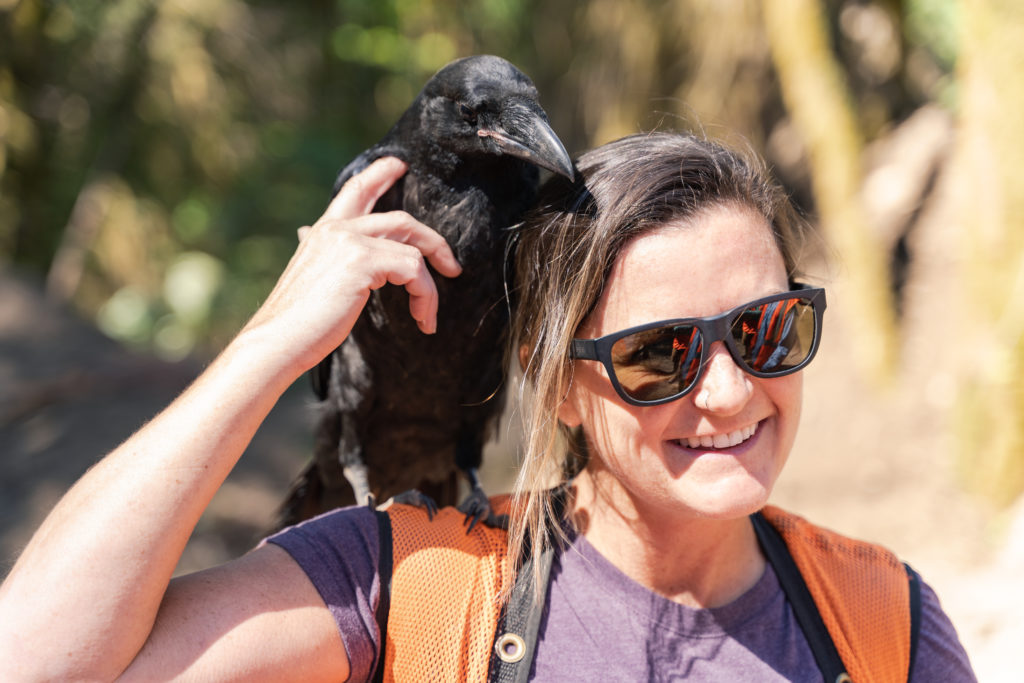
As someone with relatively limited knowledge and experience witnessing habitat reconstruction/restoration projects, I could understand why some people would be skeptical of Stage Zero restoration. Piles of rocks in front of me, excavated bank to the right and felled trees to the left — it looked like a bomb went off.
Stage Zero restoration is a new and unique approach to restoring depositional river valleys and, in this case, a deeply incised and straightened river.
While most restoration projects are geared toward single-threaded channel patterns, Stage Zero acknowledges and encourages the multi-threaded channel approach by reconnecting the river with old channels and its floodplain. Through aggressive efforts to add woody debris, river substrate and sediment, Stage Zero seeks to speed up processes that would normally be left for years to develop.
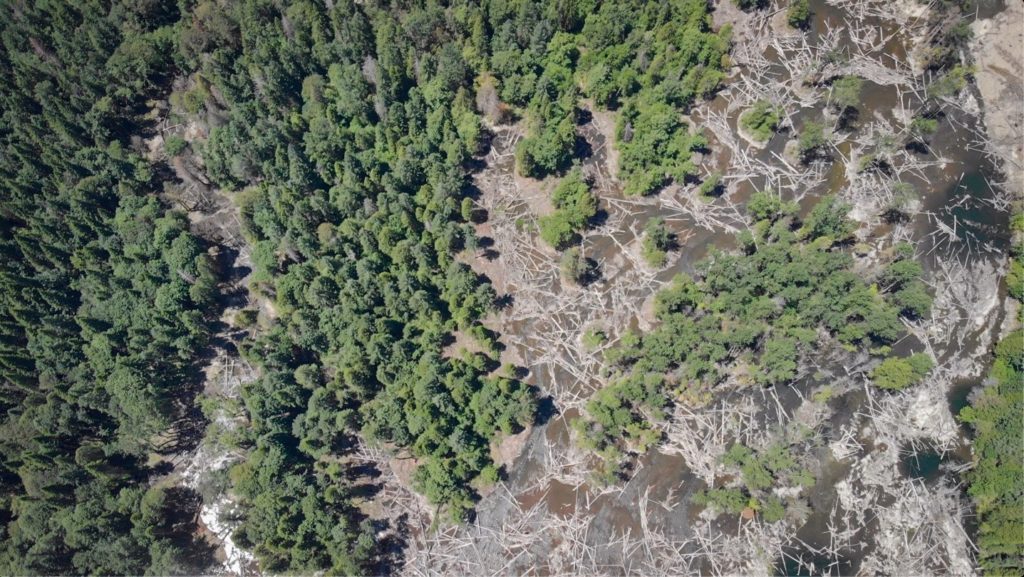
We were looking at Phase Two of the restoration process, the diversion channel. After creating large areas of tree cuts, raising the river’s deep incised beds and placing large patches of trees in Phase One of the operation, Phase Two was aimed at redirecting the main river’s flow into a diversion channel. The channel is supposed to bring water into the newly created expanse of woody debris and various pools (perfect habitat for both adult and juvenile chinook salmon, we were told). This, in turn, would dry out the section of the river in between. Thus, allowing the crew to take on the next phase of the project.
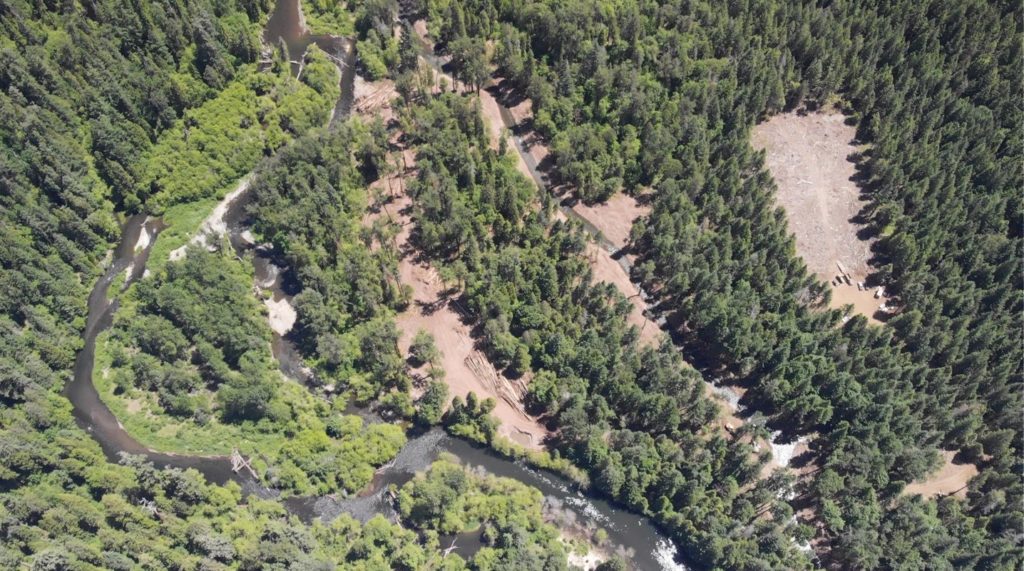
For the first hour on site, the crew shadowed Kate — giving us an opportunity to listen in on conversations about sloughing, impacting turbidity and adjusting the river’s velocity. It was an incredible opportunity to see hydrologists, fisheries biologists and others working together to recreate another river.
Time and time again, I noticed a pattern to the approach of Stage Zero. It’s a very hands-on, hands-off approach. While deemed an aggressive restoration technique —including placement and felling of trees and rocking/grading of banks —Kate and Jared both agreed that the goal of Stage Zero is to “let the water do the work.”
We’re providing it [water] the opportunity to do its thing, what it would do naturally had humans left it alone in the first place,” Kate explained.
After taping a few more areas of the diversion tube that needed fine tuning, the Odyssey crew was fortunate enough to climb into and witness the progress of Phase One.
As each person precariously hopped onto and off of downed trees, we threaded our way through the maze. Jared and Kate would occasionally stop us to point out a few noticeable improvements that the project has already provided to the river. Whether it was the increase in insect life, availability of silt and gravel areas for lamprey and salmon spawning or creation of deep pools filled with spotted dace and Chinook smolt, it was clear that Stage Zero is doing something right.
Passing by one spot marked with a pink ribbon, Kate proudly pointed out something special.
“Normally we won’t get many salmon coming up the McKenzie because there is not great spawning habitat,” she said. “But only a few months after Phase One, this area created perfect shallow gravel areas where we had four chinook come up to spawn.”
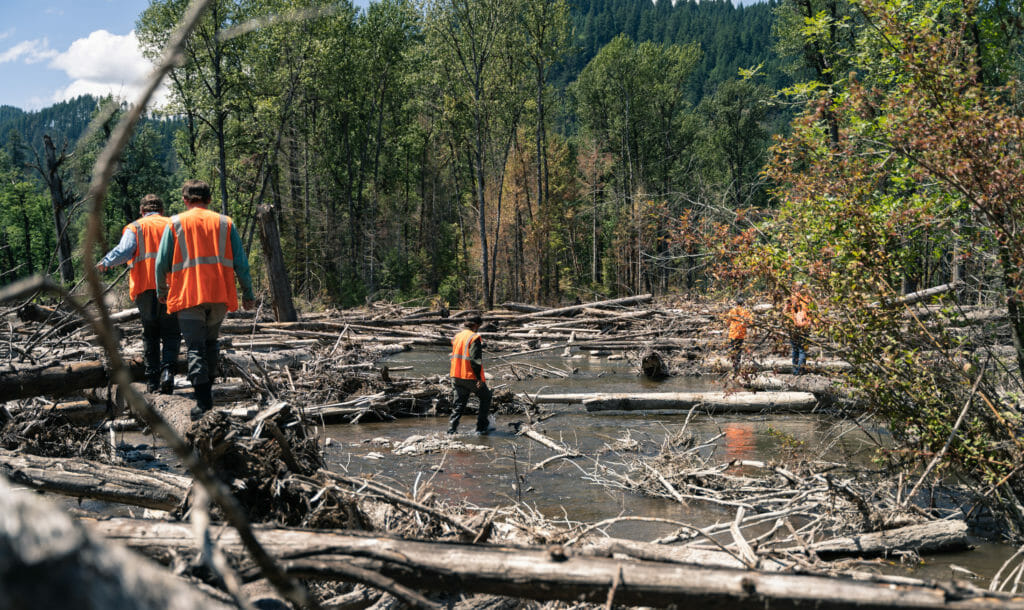
While it might be difficult to understand the true scale of this project at first, after our tour from Kate and Jared, the Odyssey crew was excited to see such an amazing, successful effort in action. In a day and age where it does not seem like there are too many “successful” conservation efforts, it was great to see Stage Zero delivering almost immediate improvement to the river.
Read more from the TU Costa 5 River Odyssey Team here:


